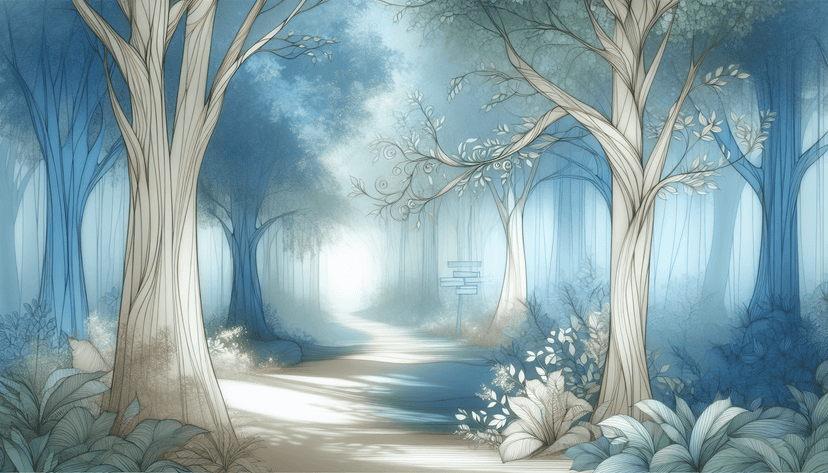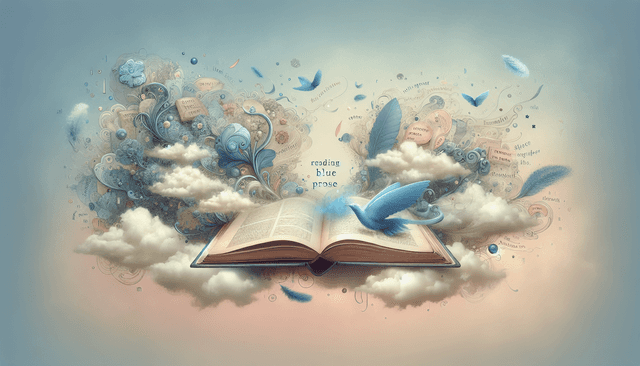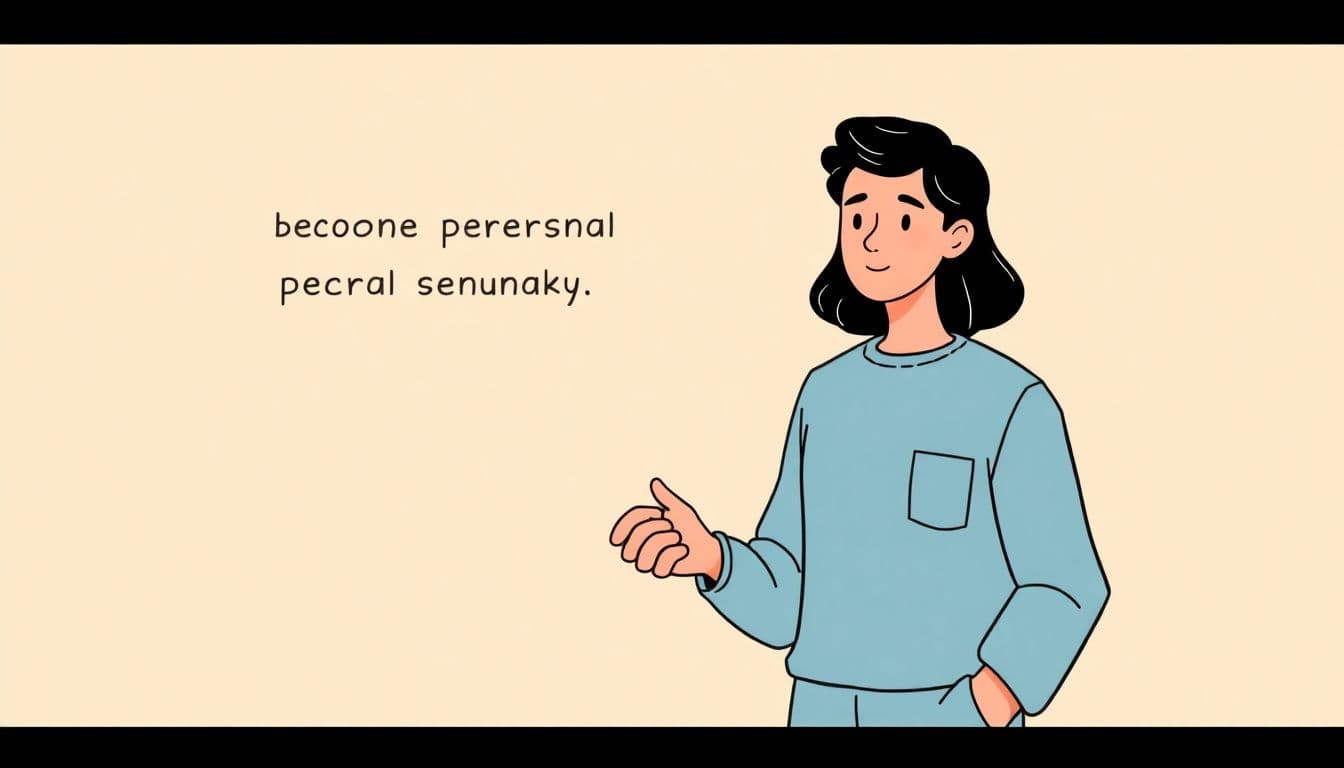Table of Contents
Have you ever come across writing that sounds poetic yet is a bit over-the-top? You’re not alone! Many readers feel overwhelmed by overly ornate language that tries too hard to impress. It’s like getting lost in a forest of fancy words without a map.
But don’t worry, if you stick around, I’ll help you navigate through the world of blue prose. Together, we’ll explore its unique characteristics and learn how to master this style—without getting lost in the weeds.
By the end, you’ll be armed with tips, examples, and resources to either write it yourself or appreciate it when you see it. Who knows? You might even discover a hidden talent for crafting artful sentences!
Key Takeaways
- Blue prose writing features overly elaborate language that can obscure meaning and overwhelm readers.
- Key characteristics include rich imagery, intricate sentence structures, heavy use of figurative language, and fluctuating tones.
- It’s effective in genres like poetry and literary fiction, where emotion and artistry enhance the narrative.
- Common mistakes include overusing adjectives, sacrificing clarity, and relying on clichés.
- Benefits of blue prose include evoking strong emotions, creating vivid imagery, and helping writers develop their skills.
- Knowing when to use blue prose vs. clearer styles is essential depending on the audience and story type.

What is Blue Prose Writing?
Blue prose writing refers to a style of writing characterized by its use of overly elaborate and flowery language, often to the point of obscuring meaning.
This approach can be enchanting, drawing readers in with its lushness but can also alienate those who prefer clarity and straightforwardness.
Essentially, blue prose indulges in excessive adjectives, metaphors, and descriptions, which can either elevate the narrative or render it confusing.
Many appreciate it in poetry and literary fiction, where emotion and imagery take precedence, but it may not suit all genres.
Characteristics of Blue Prose
One of the standout features of blue prose is its rich and vivid imagery, often attempting to create a strong visual in the reader’s mind.
Additionally, this style tends to employ intricate sentence structures, sometimes leading to lengthy sentences that intimidate readers.
Another characteristic is the heavy use of figurative language; similes and metaphors are often abundant, inviting readers to look deeper into the text.
Blue prose might evoke emotions effectively, wrapping readers in a warm hug of sentiment, but can risk losing them with its complexity.
Lastly, the tone can fluctuate drastically, swinging from whimsical to melancholic without warning, keeping readers guessing about the author’s intent.
Examples of Blue Prose
Consider this sentence: “The moon, bathed in silvery light, glimmered like a pearl in an infinite ocean of velvety darkness.” This vivid imagery exemplifies blue prose.
However, if every sentence in your writing is crafted like this, it may lead to reader fatigue. Balance is key.
In contrast, a more straightforward version might read: “The moon shone brightly in the night sky.” While less flowery, it’s far more accessible.
Classic literature often showcases blue prose; think of the works of authors like F. Scott Fitzgerald or Virginia Woolf, where language is artfully ornate.
Exploring their texts can offer a clear view of how blue prose operates without getting bogged down in the details.
How to Write Blue Prose
To start embracing blue prose, aim to enrich your vocabulary. Utilize a thesaurus to expand your word bank, but beware of overcomplication.
Next, practice weaving intricate metaphors and similes into your writing. This adds layers of meaning that can deeply engage your audience.
Experiment with sentence length and structure; try combining short, punchy statements with longer, descriptive ones for a dynamic flow.
Lastly, read widely in genres that are known for their lush language, like poetry and literary fiction, to absorb and get inspired by their unique styles.
Remember, blue prose isn’t just about being fancy—it’s about evoking emotions and painting pictures with words.

Common Mistakes in Blue Prose Writing
Writing in blue prose can be a delightful but tricky endeavor. One of the most common mistakes is overusing adjectives and adverbs, which can drown your writing in unnecessary detail.
Instead of enhancing the narrative, this often leads to reader fatigue. Aim for quality over quantity; choose your descriptors wisely to evoke strong imagery without going overboard.
Another error is neglecting clarity. It’s easy to get lost in ornate language, but your primary goal should be to communicate effectively.
Remember to balance your complex sentences with some straightforward ones. This gives your readers a breather and allows them to absorb the narrative.
Additionally, don’t forget the importance of editing. If your first draft is dripping with purple prose, it’s time to roll up your sleeves and tighten up your writing.
Finally, be wary of clichés. Relying on well-worn phrases can make your prose feel stale and uninspired. Strive for originality instead.
Benefits of Using Blue Prose
While blue prose can seem daunting, it offers several unique benefits. Firstly, it has the power to evoke strong emotions and create vivid imagery in your reader’s mind.
When well-executed, this style can draw readers into your world, making them feel as if they’re living the story alongside your characters.
Blue prose is particularly effective in genres like poetry and literary fiction, where the beauty of language enhances the overall experience.
Moreover, employing rich language in your writing can set your work apart from others. It adds a distinct flavor, encouraging readers to linger over your words.
A sense of rhythm often accompanies blue prose as well. Musicality in writing can elevate a narrative, turning even the simplest of sentences into a dance.
Lastly, using blue prose can help sharpen your writing skills. It challenges you to think creatively about language, expanding your vocabulary and ability to express ideas more artfully.
Blue Prose vs. Other Writing Styles
Comparing blue prose with other writing styles highlights its distinctive qualities. For example, unlike concise and straightforward styles found in journalism, blue prose revels in its complexity and lushness.
In contrast to technical writing, which prioritizes clarity and precision, blue prose embraces ambiguity and artistic expression.
While minimalist writing strips down language to its bare essentials, blue prose flourishes with adjectives, metaphors, and flowing sentences.
When you read blue prose, you may feel more immersed in the language, while other styles often focus on directness and practicality.
Consider the narrative styles in genres like fantasy or romance; blue prose is frequently adopted to create an enchanting world filled with intricate details and emotions.
However, the trick is knowing when to use blue prose versus clearer styles. Each has its place, depending on your target audience and the story you’re telling.

Tips for Reading Blue Prose
Reading blue prose can be a delightful adventure, but it takes a specific approach to truly appreciate its beauty.
First, keep an open mind. Embrace the intricate language and allow yourself to get lost in the imagery without rushing to dissect every phrase.
When you stumble upon a complex sentence, take your time. Read it aloud to capture the rhythm and flow of the words.
It can be helpful to jot down any phrases or descriptions that strike you, creating a personal collection of vivid imagery.
Additionally, it’s okay to reread sections. Sometimes, the second or third reading brings clarity to what may initially confuse you.
Also, consider the context. Understanding the author’s background or the time period can enhance your appreciation for their stylistic choices.
Finally, don’t hesitate to discuss your readings with friends or join book clubs. Sharing interpretations can deepen your understanding and reveal nuances you might have overlooked.
Resources for Blue Prose Writing
If you’re looking to hone your skills in writing blue prose, there are plenty of valuable resources to explore.
First up is Goodreads, a fantastic platform to find recommendations for books celebrated for their lush language.
The MasterClass website frequently offers courses from renowned authors focusing on style and creativity, perfect for aspiring blue prose writers.
Check out The Academy of American Poets for poetry that often showcases the elegance of blue prose. Reading more poetry can inspire your use of figurative language.
For daily practice, consider journaling with a twist. Allow yourself to play with colorful descriptions and elaborate sentences without the pressure of a perfect draft.
Finally, don’t underestimate the power of a writing group. Joining a local or online community can provide feedback and motivation while helping you grow.
FAQs
Blue prose writing is a style characterized by elaborate and descriptive language that is often more emotive and evocative than straightforward. It aims to paint vivid images and immerse readers in the narrative.
Common mistakes in Blue Prose include excessive elaboration that obscures meaning, clichés that weaken impact, and poor pacing. Balancing detailed imagery with clarity is essential to maintain reader engagement without overwhelming them.
To improve your Blue Prose writing, read widely to absorb stylistic elements, practice descriptive exercises, and revise your work focusing on imagery and emotional resonance while seeking feedback from peers or writing groups.
Benefits of Blue Prose include enhanced reader engagement through vivid imagery, the ability to evoke emotions and atmosphere, and the capacity to create memorable characters and settings that linger in the reader’s mind.



